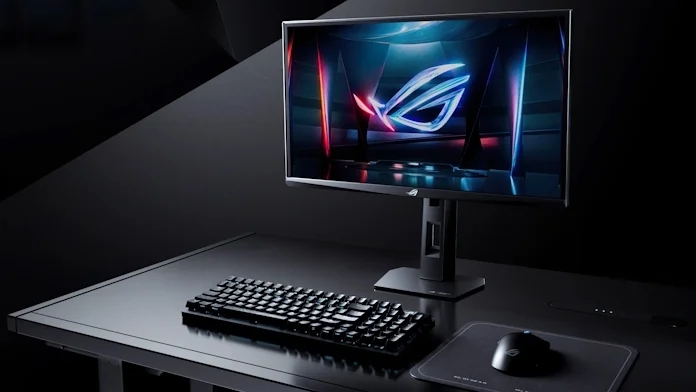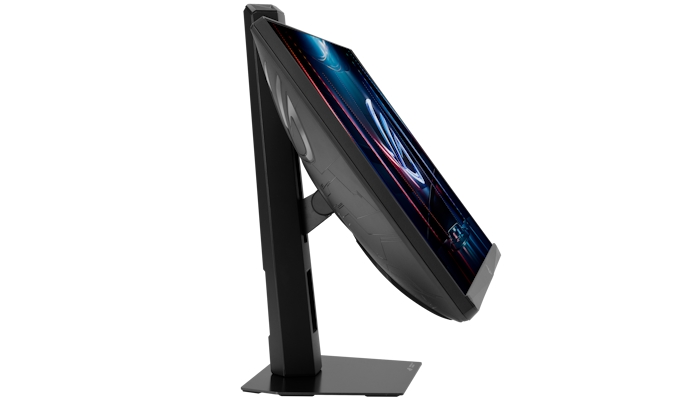Asus debuts 24-inch 610 Hz Full HD gaming monitor with a Super TN panel
The ROG Strix Ace XG248QSG has a native refresh rate of 600 Hz, but can overclock to 610 Hz

If you thought Acer’s 600 Hz gaming monitor was fast, you haven’t seen anything yet. In what is increasingly becoming a game of one-upmanship among monitor manufacturers, ever-higher refresh rates seem to be the newest trend. Asus is looking to take the crown, for now, with the ROG Strix Ace XG248QSG.
The ROG Strix Ace XG248QSG technically has a 600 Hz native refresh rate, but it is user-configurable to a 610 Hz overclock for absolute bragging rights. While most of the 500 Hz+ gaming monitors introduced in the past two years have utilized an IPS display, and more recently, QD-OLED, the ROG Strix Ace XG248QSG uses a 24.1-inch Super TN panel with a 1920 x 1080p (Full HD) resolution. TN panels are known for their incredible speed, but they tend to lag behind IPS, VA, and OLED panels in viewing angles and color reproduction. Asus acknowledges these downsides and says that its Super TN panel technology helps to enhance color output and brightness (370 nits maximum), while delivering 90 percent DCI-P3 coverage.

As you would expect, the ROG Strix Ace XG248QSG supports AMD FreeSync Premium and Nvidia G-Sync. Asus also touts a 0.1 ms response time and carefully points out that it has prioritized tackling input lag. In an effort to improve overall system response, which is crucial to maintaining a competitive edge in eSports gaming, the ROG Strix Ace XG248QSG uses GameFast Technology to reduce input lag to just 0.8 ms. If that wasn’t enough, you’ll find Extreme Low Motion Blue 2 (ELMB 2) technology combined with a dual backlight design to reduce motion blur.
Although we typically associate ROG products with brash styling and RGB design flourishes, the ROG Strix Ace XG248QSG has a relatively low-key design. The monitor is all-black, and there are no RGBs that you can configure to sync with your rig. If you’re not into that kind of superfluous touch when you’re trying to bust a cap into an opponent, it’s likely a minor omission. However, the monitor is adjustable for height (0 to 160 mm), swivel (+/- 45 degrees), and tilt (+35 to -5 degrees). Regarding connectivity, you get two HDMI 2.1 ports, one DisplayPort 1.4 port, a headphone jack, and a USB-C port. However, don’t get too excited about the USB-C port; it’s only there for performing firmware updates.
At this time, pricing and availability for the ROG Strix Ace XG248QSG haven’t been announced.
Get Tom's Hardware's best news and in-depth reviews, straight to your inbox.

Brandon Hill is a senior editor at Tom's Hardware. He has written about PC and Mac tech since the late 1990s with bylines at AnandTech, DailyTech, and Hot Hardware. When he is not consuming copious amounts of tech news, he can be found enjoying the NC mountains or the beach with his wife and two sons.
-
King_V Are . . uh . . are there people claiming to be able to see faster than 360, or even 240 fps?Reply -
Dementoss Reply
Oh yes and, they are adamant they really can see the difference. About 200Hz is the level beyond which we cannot perceive the difference, as the monitor refresh rate increases further.King_V said:Are . . uh . . are there people claiming to be able to see faster than 360, or even 240 fps? -
psyconz Reply
This reminds me of the argument that "a 128kb/s mp3 is indistinguishable from source". I've even heard people say "once the Hz gets above 60, nobody can tell the difference." Trust me, it matters - besides, it's not just our sense of vision that gets engaged while gaming.Dementoss said:Oh yes and, they are adamant they really can see the difference. About 200Hz is the level beyond which we cannot perceive the difference, as the monitor refresh rate increases further. -
King_V Reply
I've done the math and I'd peg it at slightly under 100Hz, based on the fastest human physical response time to visual stimuli measured.psyconz said:This reminds me of the argument that "a 128kb/s mp3 is indistinguishable from source". I've even heard people say "once the Hz gets above 60, nobody can tell the difference." Trust me, it matters - besides, it's not just our sense of vision that gets engaged while gaming.
That said, I don't think I've ever heard ANYONE make that claim about either 60Hz refresh rates, nor 128kb/s mp3. And I was there for the Napster heydey of the late 90s.
Now, I personally couldn't tell when it came to the more mp3s, but that was because of the crap speakers I had on my PC. I did, however, have to run my CRT at 72Hz refresh or higher, because I'd get headaches from actually being able to perceive a slight flickering at 60Hz (edit: with light-colored or white screens). -
Notton Reply
I think the mp3 part came about from the way MiniDisc was advertised, and then eventually overtaken by mp3 players with mp3s encoded at 128kbps/44.1kHz.King_V said:That said, I don't think I've ever heard ANYONE make that claim about either 60Hz refresh rates, nor 128kb/s mp3. And I was there for the Napster heydey of the late 90s.
I think people forgot that we didn't have great quality portable headphones and earbuds using a 3.5mm jack back in the day. I can't even recall any model being sold as high quality without going to a 6.25mm jack. Most people used what came with the player and those were bad, especially ipods.
As for the 60Hz thing, I'm not sure of the exact origins, but part of it is from the filming industry.
20fps films were perceived as choppy, while 24fps looked okay. 24fps was also a hardware limitation at the time.
Then CRT TVs came along with 50~60Hz refresh rates (interleaved frames), and almost everyone did just fine on those.
Then LCDs with progressive frames came along and kind of changed the dynamic.